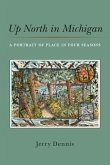It is through brief moments in our lives that the spiritual most often communicates itself. Fleeting as they are, these small encounters with the "familiar wild" instruct us in dealing with change and loss. They are the icons that point not so much to answers, but to a way of living in the tension between life and death. Each of these essays represents one moment. Most of them occur very close to home. There is nothing exotic about any of the landscapes Susan Hanson depicts--the oak mottes and scrub of the South Texas Plains, the rocks and rivers of Central Texas, the soil in her own backyard--yet these are the sorts of landscapes that teach and nurture all of us who care to see them. This way of seeing the world--as an undivided whole of the physical and the spiritual--is nutritive, healthful. The vision is partial, but all vision is partial, and it is in the pieces, the glimpses, the tastes, that we acquire a sense of the whole. Divided into three sections, the book addresses the questions of how we deal with change and loss in our lives. In "Innocence," the essays are marked by a spirit of curiosity, wonder, and adventure. The middle section reflects a growing awareness of loss, both personal and in the natural world. In "Grace," the final essays point toward the possibility of reconciliation with loss--a reconciliation mediated through nature. Written as reflections, rather than full-blown arguments, Icons of Loss and Grace offers no final resolution to the questions it presents. Yet in these essays we may recognize that delight and sorrow are soul mates, that loss and redemption are a part of the same sacred ground, and that pain can evolve into grace.








